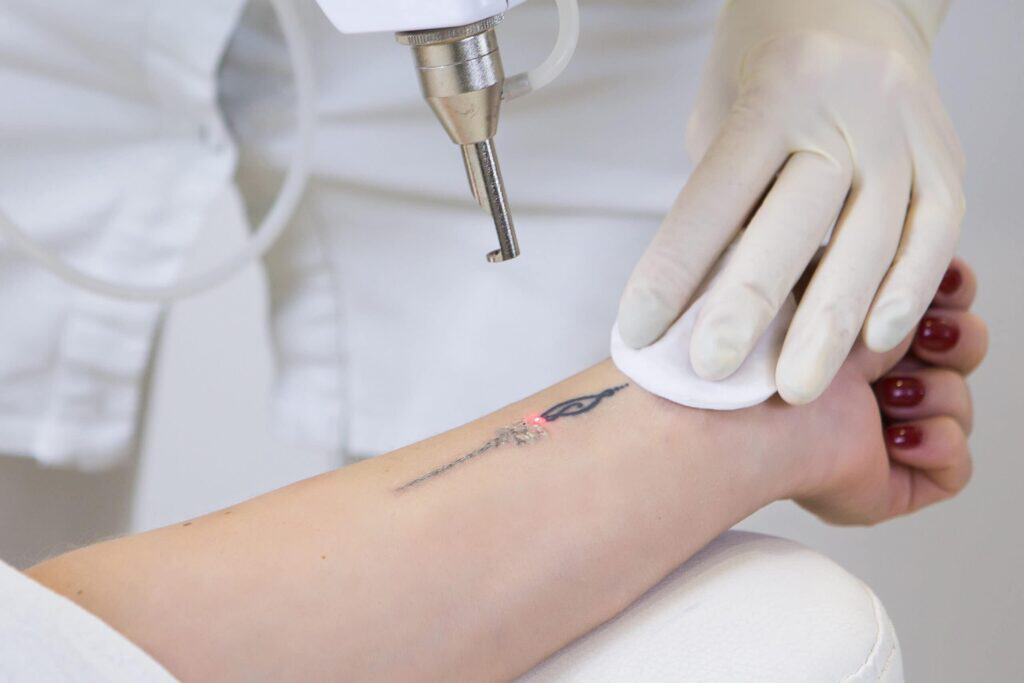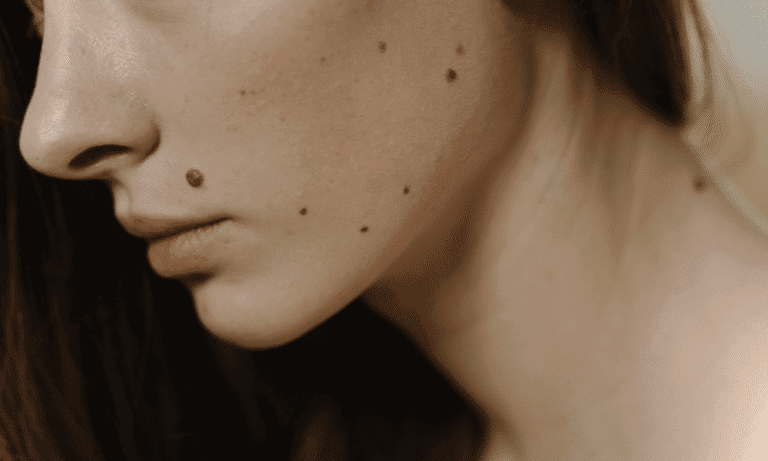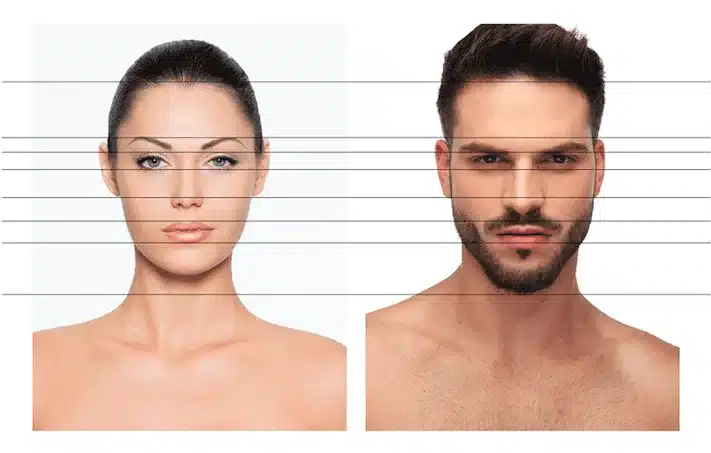Understanding Pain Factors in Tattoo Removal
Pain Tolerance
Pain tolerance varies greatly among individuals. This variation in colors and pigment plays a crucial role in how one experiences tattoo removal pain with lasers, lasting minutes. Some people experience the process of laser removal as bearable, likening it to the feeling of a rubber band snapping against the skin for minutes. Others describe it as more intense. The key lies in understanding your body’s reaction to discomfort and preparing mentally for the procedure, especially with the experience of laser removal care from your provider.
Tattoo Size
The size of the tattoo, type, and provider experience significantly impacts pain levels during removal. Larger tattoos require more time under the laser, often translating to increased discomfort, depending on the type, experience of the provider, and use of removal creams. Areas with denser ink pigmentation might also necessitate additional sessions for laser removal or tattoo removal creams, further affecting one’s pain experience depending on the provider and type.
Location Sensitivity
Tattoo location is another critical factor. Certain body parts are more sensitive due to a higher concentration of nerve endings. For instance, tattoos on the ribs or near bones tend to be more painful to remove than those on fleshy areas like the arms or thighs.
Stress and Emotions
Stress and emotions have a profound influence on pain perception. A positive mindset can notably reduce discomfort during tattoo removal sessions. Conversely, anxiety and negative expectations may heighten sensitivity to pain. It’s essential to approach the process with calmness and positivity.
How Skin Sensitivity Influences Pain
Nerve Distribution
Skin’s sensitivity to pain during tattoo removal largely depends on the distribution of nerve endings and touch receptors. These receptors send signals to the brain when they detect pressure, touch, or discomfort. Areas with a denser concentration of these receptors, such as the fingertips and face, typically report higher levels of pain during the tattoo removal process.
It’s crucial to understand that the sensation felt during this procedure is not just about removing the ink particles; it’s also about how densely packed an area’s receptors are. For instance, the back may have fewer touch receptors compared to more sensitive regions like the neck or ankles.
Mitigation Strategies
Given this knowledge, individuals can strategize to reduce discomfort. Choosing a tattoo location with fewer nerve endings can be a proactive step for those considering future removal. Discussing pain management options with professionals before starting treatment can provide comfort measures tailored to one’s skin sensitivity.
Professionals might suggest topical numbing agents or cooling methods to ease the sensation. Understanding one’s skin and its response plays a key role in preparing for and managing pain effectively during tattoo removal.
The Role of Tattoo Age in Pain Levels
Fading Factor
Older tattoos often fade over time. This fading can make them easier to remove. Fewer laser sessions may be needed, potentially reducing pain.
In comparison, newer tattoos have more vibrant ink. They sit deeper in the skin’s layers. This means they might require more effort and sessions to remove. It could lead to increased discomfort.
Ink Density
Newer tattoos often feature dense, saturated color. This density makes removal challenging. More laser sessions could be necessary, increasing overall pain levels.
Older tattoos, with their ink somewhat dispersed, present less of a challenge. They usually respond better to treatment. This can mean less pain for the individual.

Dermatologist Consultation
It’s wise to consult a dermatologist before starting tattoo removal. They can assess how the age of your tattoo affects potential pain levels. They’ll also devise a strategy tailored to your needs.
They consider factors like skin sensitivity and tattoo location too. Combining this knowledge helps predict discomfort levels accurately.
Least Painful Body Areas for Removal
Upper Arms
The upper arms have thicker skin and fewer touch receptors. This makes them less sensitive to the laser treatment process. Many people find that removing tattoos from this area involves minimal discomfort.
Tattoos located here may fade more efficiently with fewer sessions. It’s a prime spot for those wary of pain during removal.
Thighs
Thighs are another area where tattoo removal tends to be less painful. Like the upper arms, they boast thicker skin and a reduced concentration of nerve endings.
Laser removal in this region often results in less intense sensations compared to more sensitive areas. Individuals might consider thigh tattoos if future removal is a potential concern.
Insights on Sensitivity
These areas are generally considered less sensitive due to their anatomical features. The presence of thicker skin and fewer nerve endings directly impacts how the body perceives laser treatment.
Understanding these differences can guide decisions on tattoo placement, especially for those apprehensive about potential removal pain. It highlights the importance of considering future removal when choosing a tattoo’s location.
Most Painful Body Areas for Removal
Ribcage Area
The ribcage area is known for its heightened sensitivity. This is due to the thin layer of skin and close proximity to bones.
Pain in this area can be more intense compared to other body parts. It’s because the lasers used for tattoo removal send pulses directly onto a less cushioned surface.
Ankle Zone
Ankles have a high density of nerve endings and less flesh padding. This makes them particularly sensitive during tattoo removal.
The pain felt here can be sharp and persistent. Individuals often report a stinging sensation with each laser pulse.
Wrist Region
Similar to ankles, wrists are also a sensitive spot. They have many nerve endings but little fat to absorb the laser’s impact.
Clients describe the pain as throbbing or burning. This area requires careful handling during removal sessions.
Armpit Vicinity
The skin around the armpit is delicate and prone to irritation. Because of this, removing tattoos from this area can be especially painful.
Professionals advise that pain management options are discussed beforehand. They aim to ease discomfort during the process.
Managing Discomfort During Removal
Numbing Creams
Numbing creams can greatly reduce removal pain. Applied before the session, they dull the nerve endings in the skin. This makes the process more bearable.
Patients report a significant difference when using these creams. They compare the sensation to a light rubber band snap instead of intense discomfort.
Ice Applications
Applying ice before and after sessions helps too. It reduces swelling and numbs the area. Many find this method effective, especially on sensitive parts mentioned in the previous section.
Ice should be wrapped in a cloth to avoid direct contact with the skin. This way, it soothes without causing frostbite.
Relaxation Techniques
Deep breathing and listening to music are powerful tools. They help manage both pain and anxiety during removal work.
e people focus on their breathing, while others prefer distracting themselves with music or podcasts. These techniques make time pass faster and ease discomfort.
Scheduling Tips
Choosing the right time for appointments is crucial. It’s best when patients are relaxed and rested.
Early mornings or weekends often work better for most. They have more energy and tolerate pain more easily at these times.
Doctor’s Skill Impact on Pain Experience
Skilled Selection
Choosing a licensed dermatologist experienced in tattoo removal is crucial. They know how to make the process more comfortable. Their expertise allows them to adjust laser settings effectively.
A skilled doctor tailors the treatment plan. They consider individual pain thresholds and tattoo characteristics. This customization minimizes discomfort during sessions.
Aftercare Advice
Professional advice on aftercare is vital. It helps reduce discomfort and promotes healing post-removal. A good provider will give detailed instructions on managing the treated area.
These guidelines often include how to prevent infection and speed up recovery. Following these steps can significantly lessen the feeling of pain after procedures.
Outcome Expectations
The right doctor can also set realistic expectations for the results. Understanding what to expect helps clients prepare mentally and emotionally, reducing anxiety about the process.
They explain how tattoo color, size, and location affect removal success. This information helps manage client expectations regarding the number of sessions needed and potential skin damage.
Pain Medication Options for Tattoo Removal
Topical Anesthetics
Topical anesthetics can ease the discomfort of tattoo removal. They are applied directly to the skin before the procedure. Lidocaine is a common option. It numbs the area effectively.
Patients should apply these creams as directed by their specialist. This ensures maximum effectiveness and safety.
Over-the-Counter Relievers
Over-the-counter pain relievers are beneficial after tattoo removal. Ibuprofen and acetaminophen are popular choices. They reduce inflammation and alleviate pain.
It’s important to follow the recommended dosage. Taking more can lead to health risks.
Prescription Medications
In cases of extreme discomfort, prescription pain medications might be necessary. These are stronger and require a doctor’s supervision.
They should be used sparingly due to potential side effects. Always discuss with your doctor before starting any prescription pain management.
Consulting with a tattoo removal specialist about pain management strategies is crucial. They can recommend the best approach based on your pain tolerance and procedure details. Remember, the skill of the doctor performing the removal can also impact your experience of pain, as outlined in the previous section.
Summary
Tattoo removal’s pain varies, hinging on factors like skin sensitivity, tattoo age, and location. You’ve seen how some spots barely twitch while others have you gritting your teeth. But don’t sweat it; options to ease the ouch are plenty, from expert hands to pain meds. Remember, the right doc makes a world of difference in dialing down discomfort. So, before you brace for that laser session, arm yourself with these insights. Knowledge is power, especially in managing pain.
Now that you’re clued in on what to expect and how to prep, why let fear hold you back? If you’re ready to bid farewell to that ink, consult a pro and take the first step towards removal. Your skin’s story isn’t set in stone—change is just an appointment away. Ready to rewrite your canvas? Reach out today.
Frequently Asked Questions
Does tattoo removal hurt?
Yes, tattoo removal typically involves some level of discomfort, but the extent can vary widely depending on individual pain tolerance, the tattoo’s location, and the removal method used.
How does skin sensitivity affect tattoo removal pain?
Individuals with higher skin sensitivity may experience more discomfort during tattoo removal. Pain levels can also be influenced by the skin’s condition and any pre-existing sensitivities or allergies.
Does the age of my tattoo impact how much it hurts to remove?
Yes, older tattoos might fade over time, which can sometimes make them slightly less painful to remove compared to newer, more vibrant tattoos due to less ink being present.
Which body areas are least painful for tattoo removal?
Areas with more flesh like the arms, chest, and buttocks tend to be less painful for tattoo removal due to the presence of more tissue between the skin surface and underlying bones or sensitive areas.
What are the most painful areas for tattoo removal?
Areas close to bones or with thin skin such as ankles, fingers, and near the spine are generally considered more painful for tattoo removal due to less cushioning tissue.
How can discomfort be managed during tattoo removal?
Discomfort can be managed through various methods including cooling treatments, numbing creams, local anesthesia, or pain relief medications prescribed by a doctor. Discussing options with your practitioner is key.
Does the skill level of the doctor affect how much tattoo removal hurts?
Yes, a skilled and experienced doctor can significantly reduce discomfort by efficiently using laser settings tailored to your specific needs and minimizing damage to surrounding tissues.





